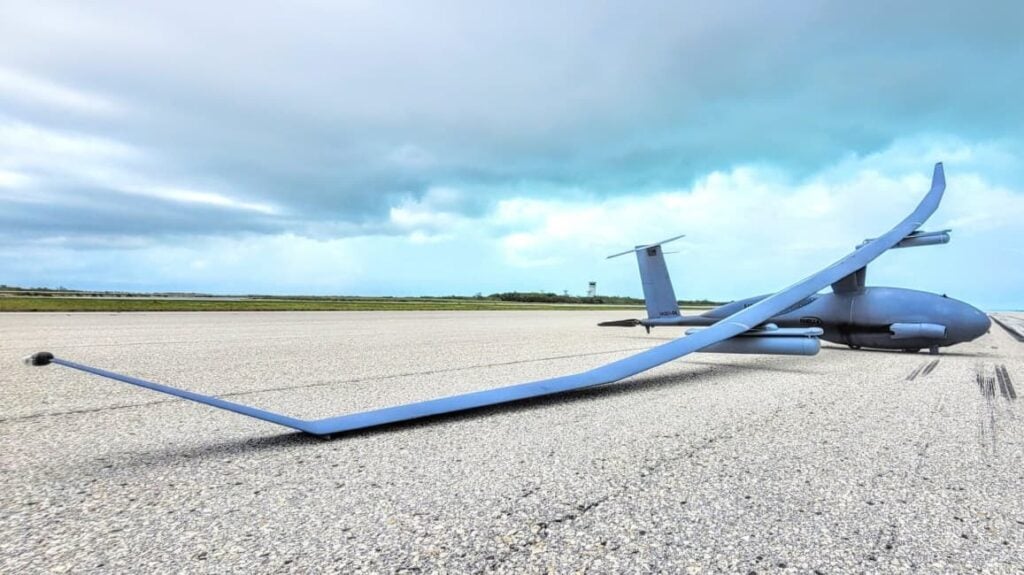

IMSAR, in conjunction with Vanilla Unmanned, has successfully demonstrated enhanced long-endurance surface-search using a Group III UAS (unmanned aerial system) equipped with both radar and Electro-Optical/Infra-Red (EO/IR). The Vanilla UAS conducted a maritime beyond visual line of sight (BVLOS) mission, lasting over 20 hours, during a U.S. Naval Forces Southern Command/U.S. 4th Fleet (USNAVSO/FOURTHFLT) Fleet Experiment, landing with an additional 28 hours of fuel remaining.
IMSAR’s NSP-5 radar system was installed as an external payload on Vanilla’s wing pylons, with a WESCAM MX-8 equipped as a retractable nose bay payload. The mission represents the longest continuous flight for IMSAR’s radar system, and IMSAR’s first occasion of command & control and transmission of real-time data products over satellite communications (SATCOM).
Vanilla’s demonstrated long endurance, BVLOS, multi-sensor payload capability addresses limitations with current Group III UAS that provide only EO/IR sensing solutions at limited endurance and range. During the flight, real time radar products, EO/IR imagery, and Command & Control (C2) data were passed via SATCOM to operators at Naval Air Station Key West. The combination of sensors illustrated the power of wide-area detecting and tracking with radar, cross-cueing sensors, and subsequent identification with EO/IR.
IMSAR’s NSP-5 is a program of record-based, all-weather, day and night multi-mode radar. Operating from Vanilla UAS, the NSP-5 demonstrated real-time SAR imaging, Maritime Moving Target Indication (MMTI) and Inverse SAR (ISAR). The multi-mode NSP-5 is also capable of Coherent Change Detection (CCD), and Ground and Dismount MTI (GMTI/DMTI) over land. Together, the Vanilla and NSP-5 present a highly capable persistent ISR (intelligence, surveillance and reconnaissance) solution.







Related Posts
New Drone Fires Thales Missile in Unmanned Air Combat Milestone
UAS Startup Accelerator Awards 3M in Funding
US Navy Orders Unmanned Tactical Resupply Aircraft